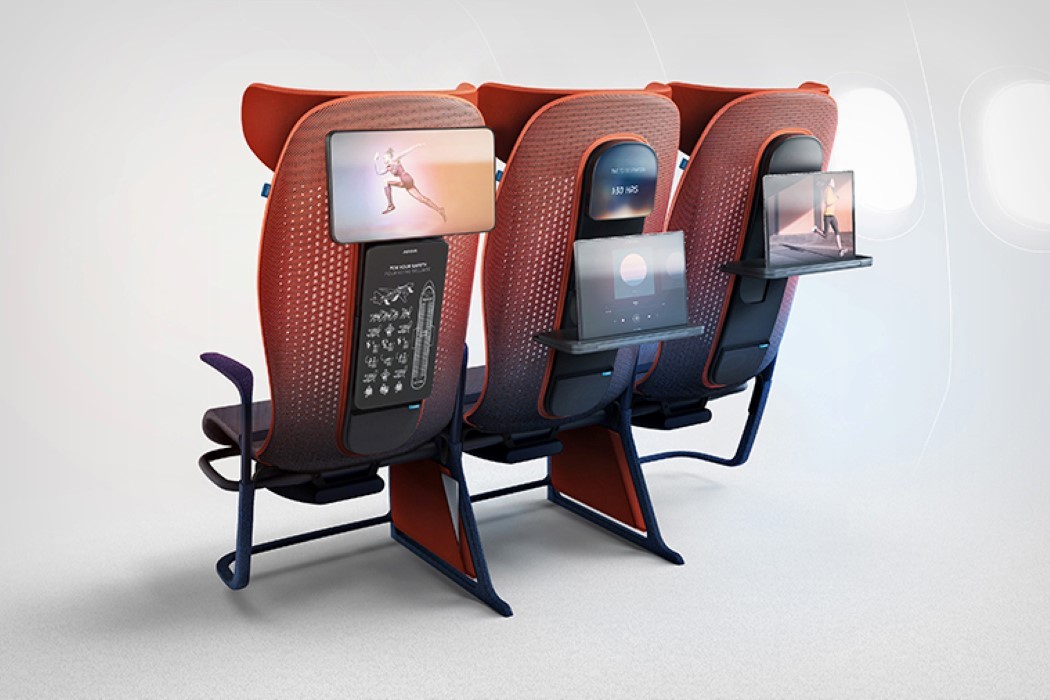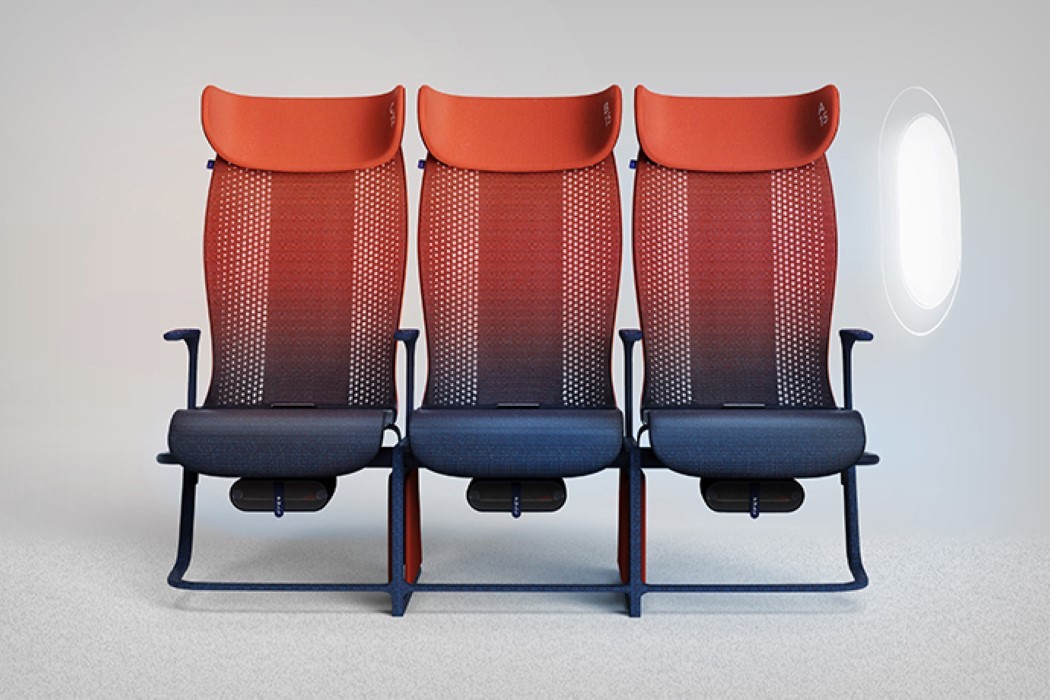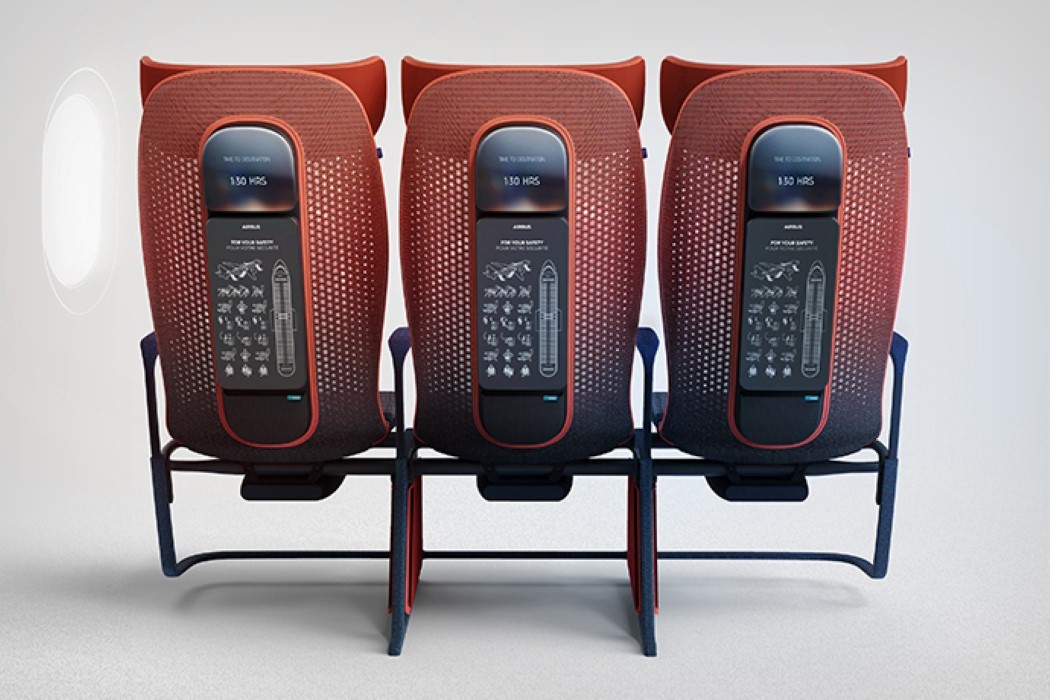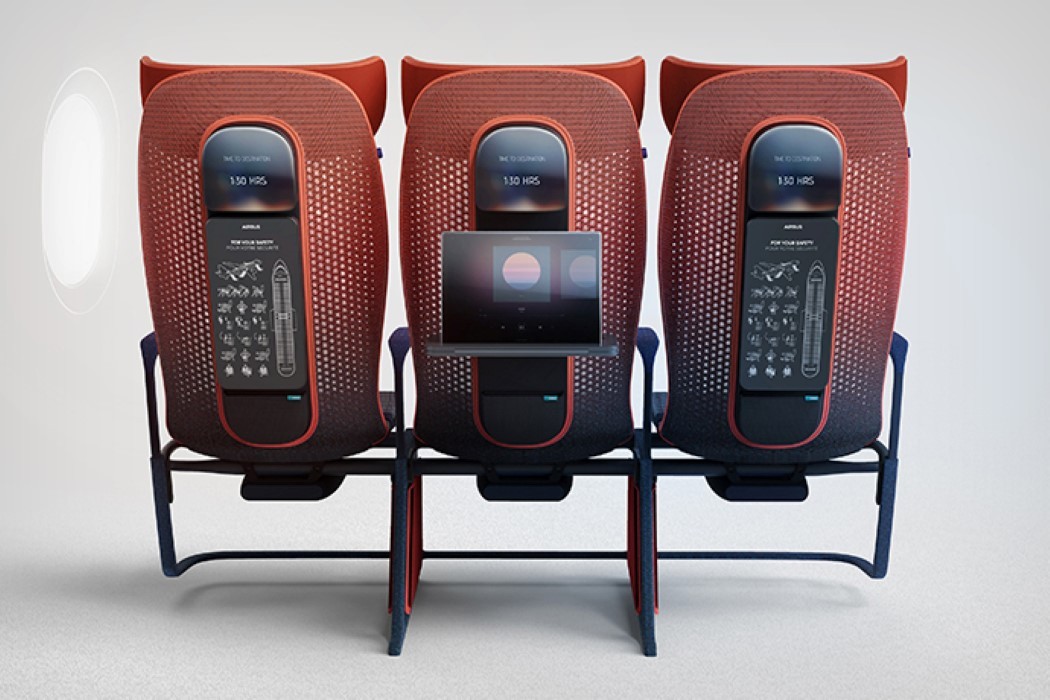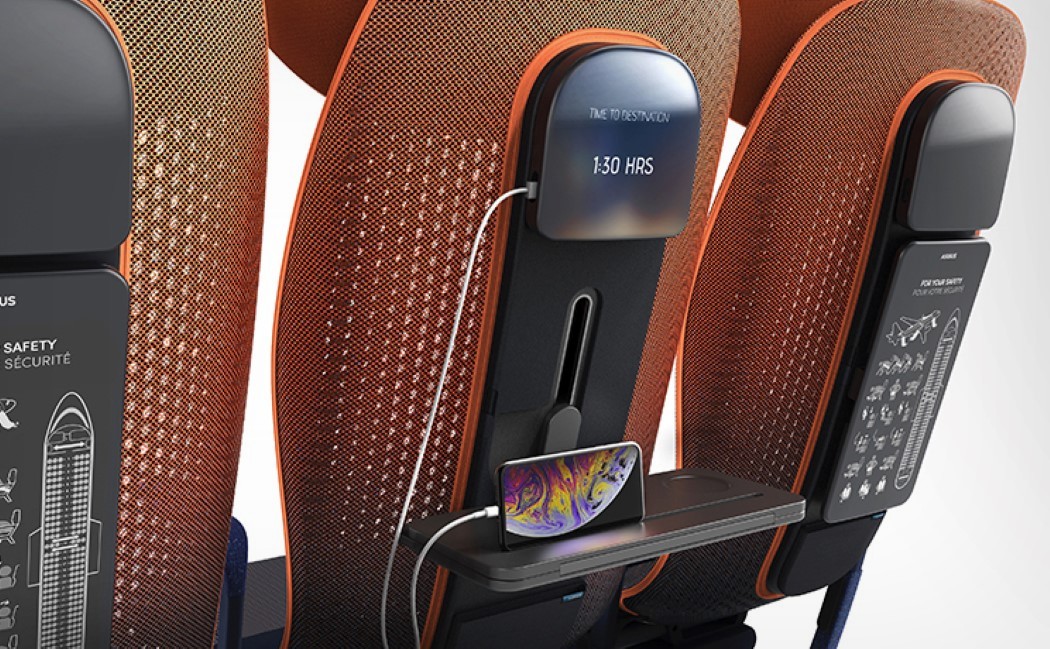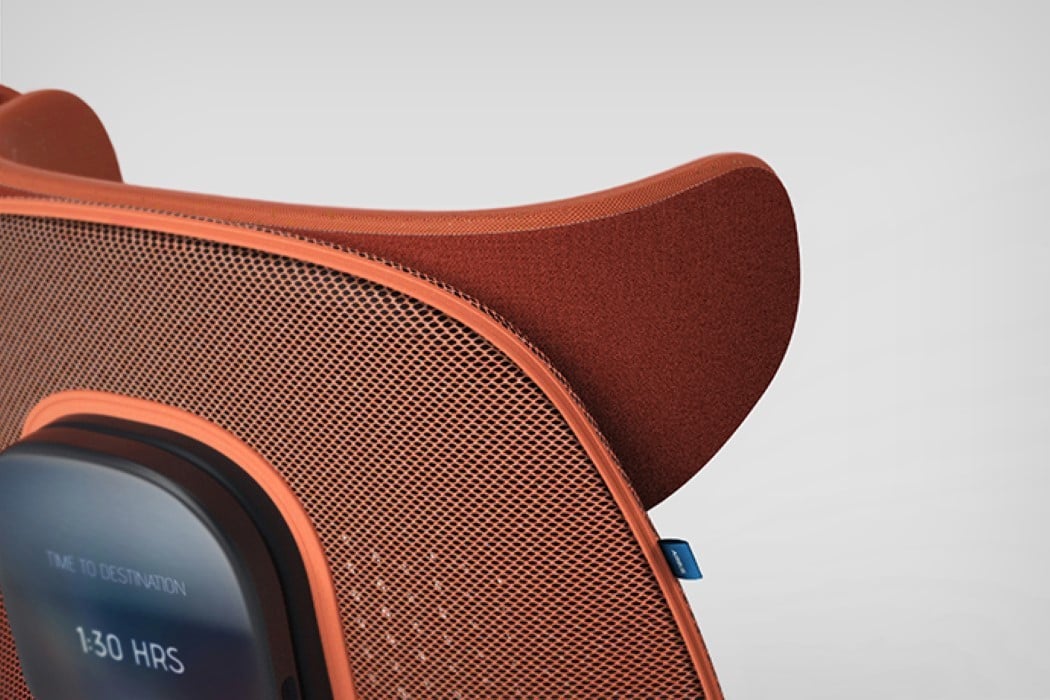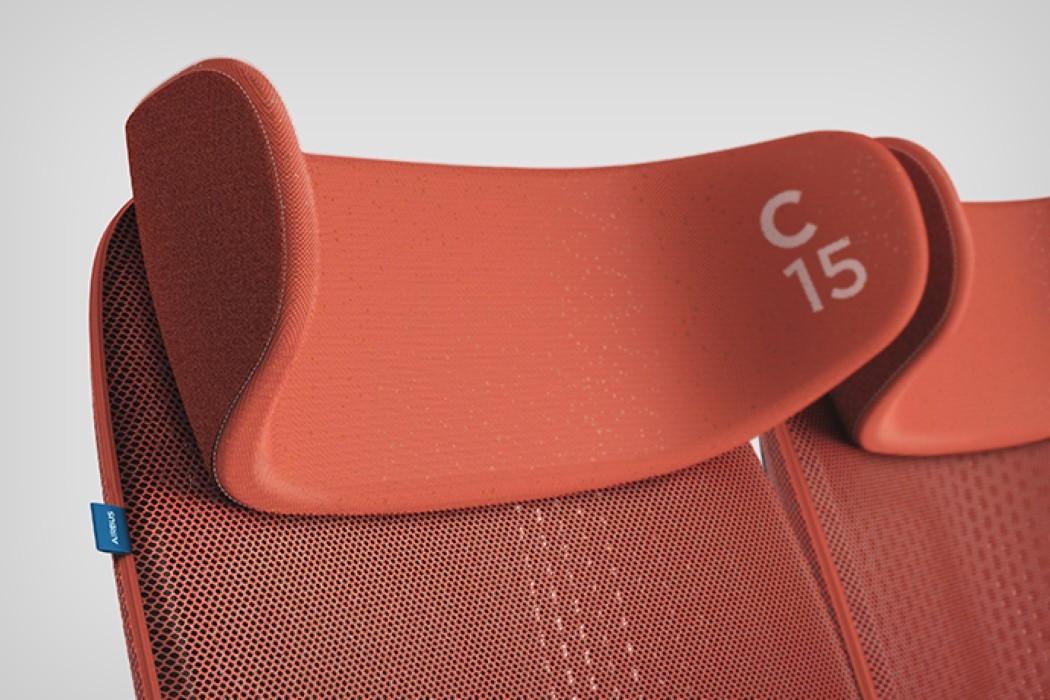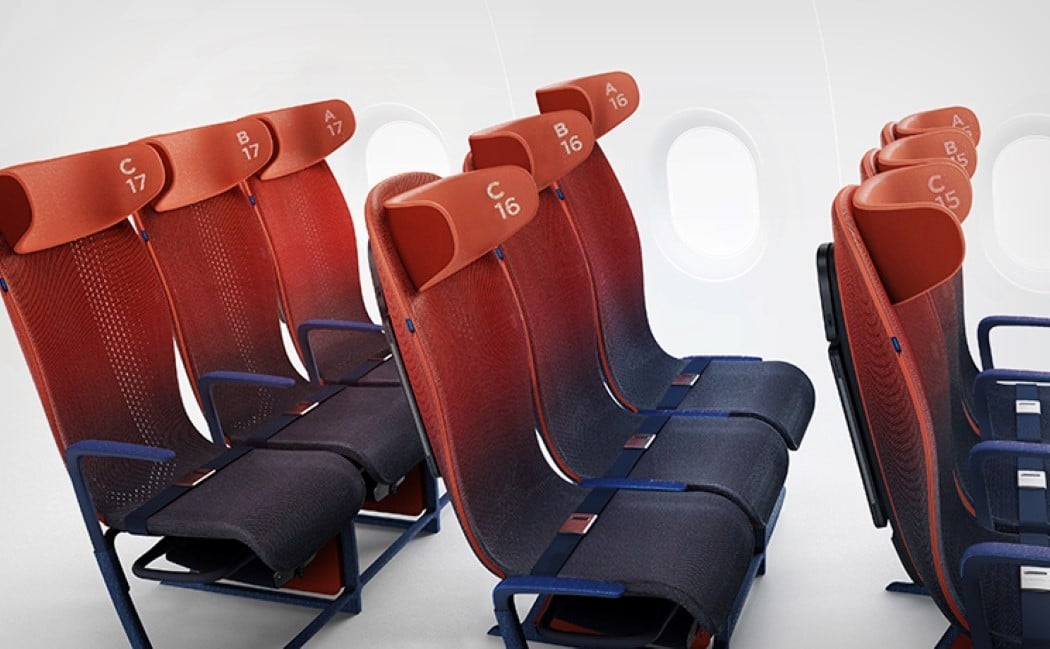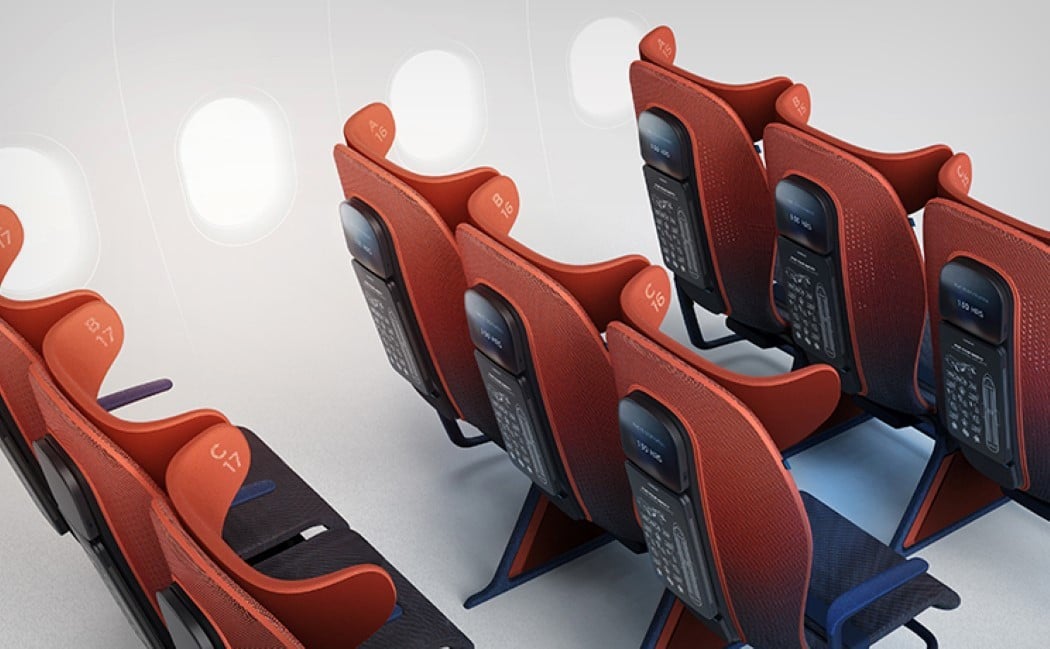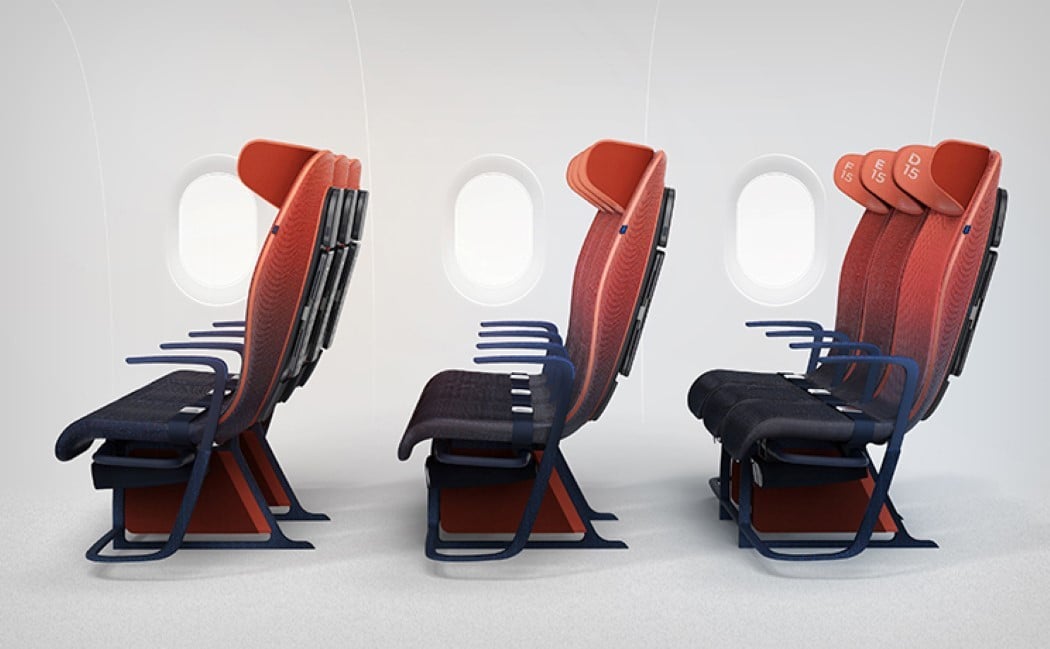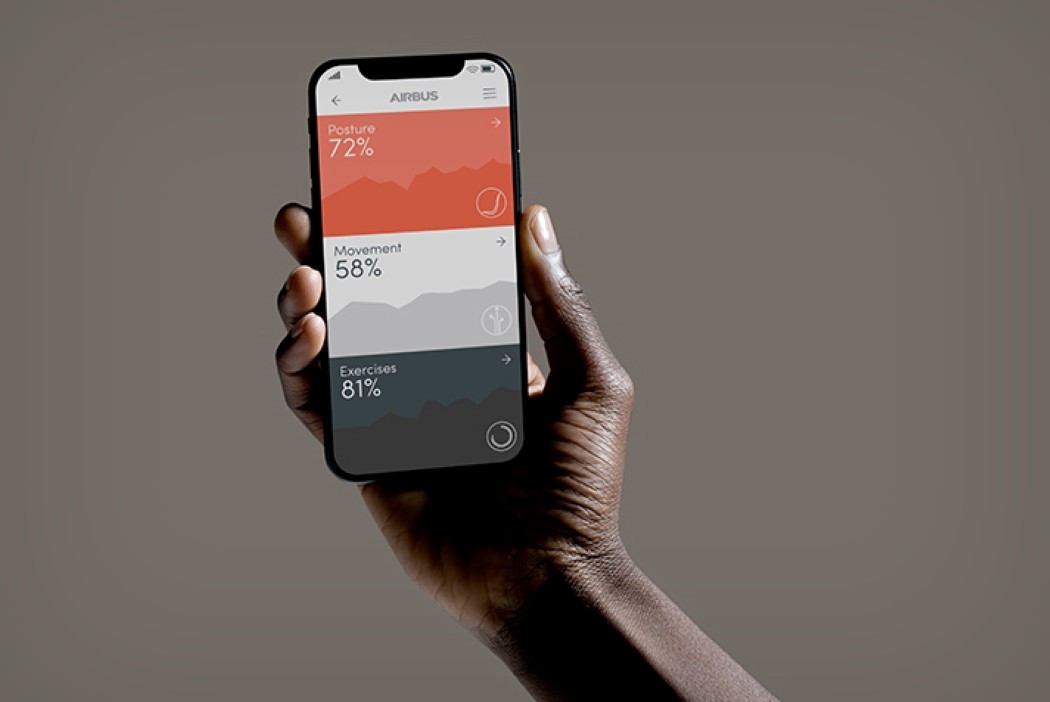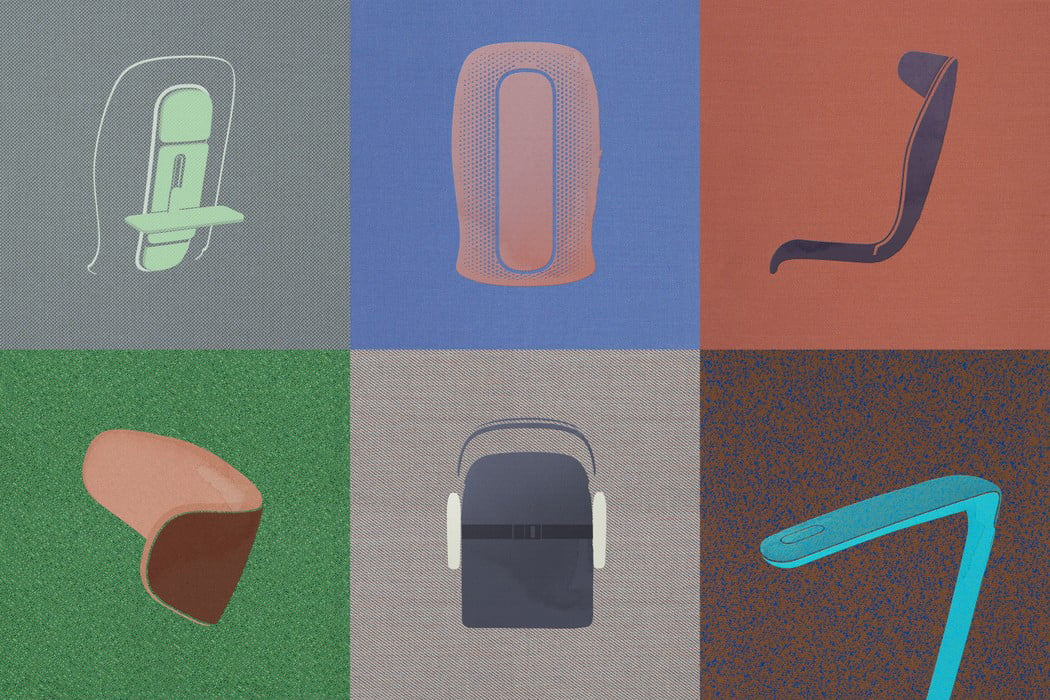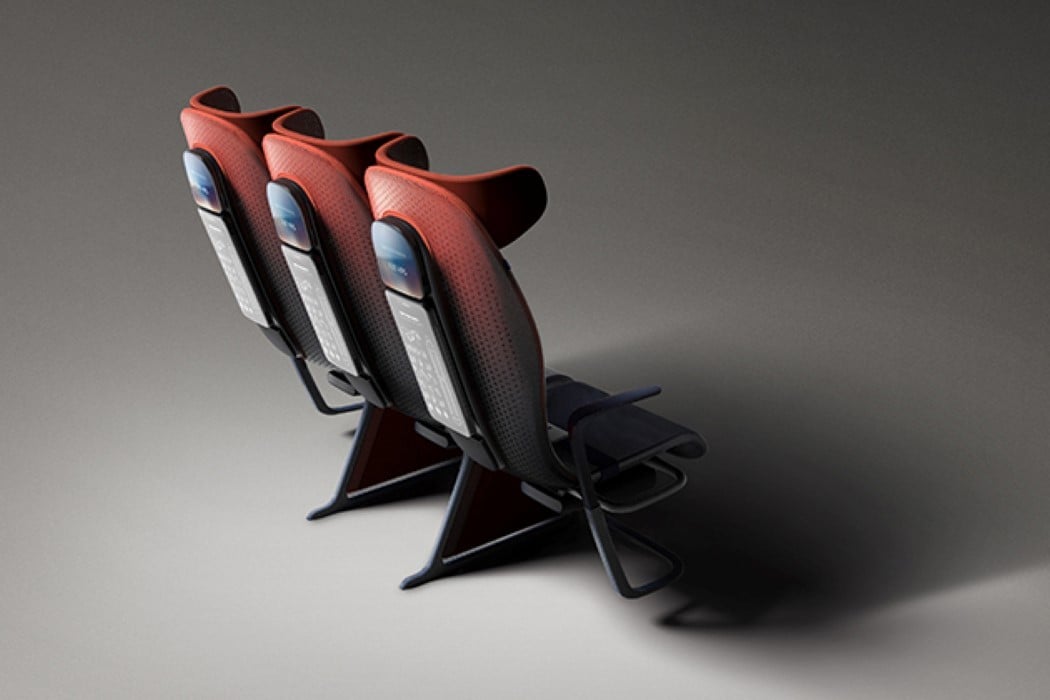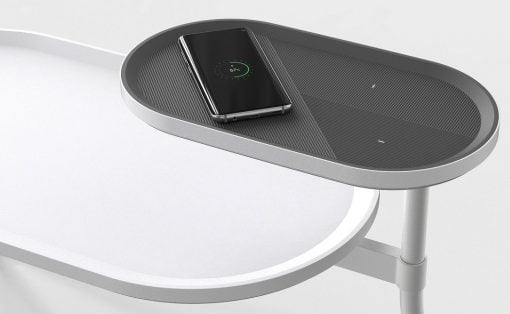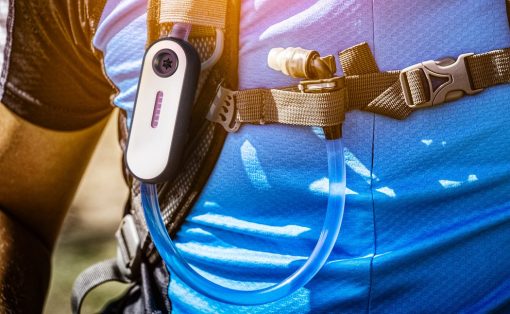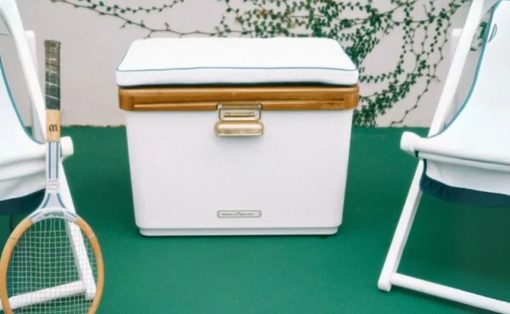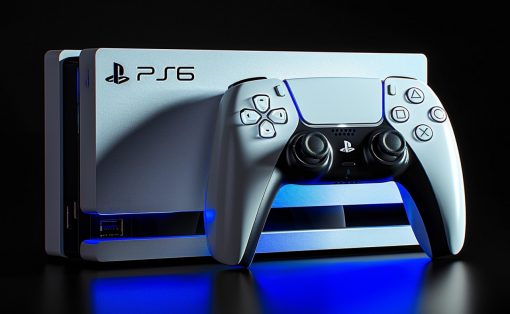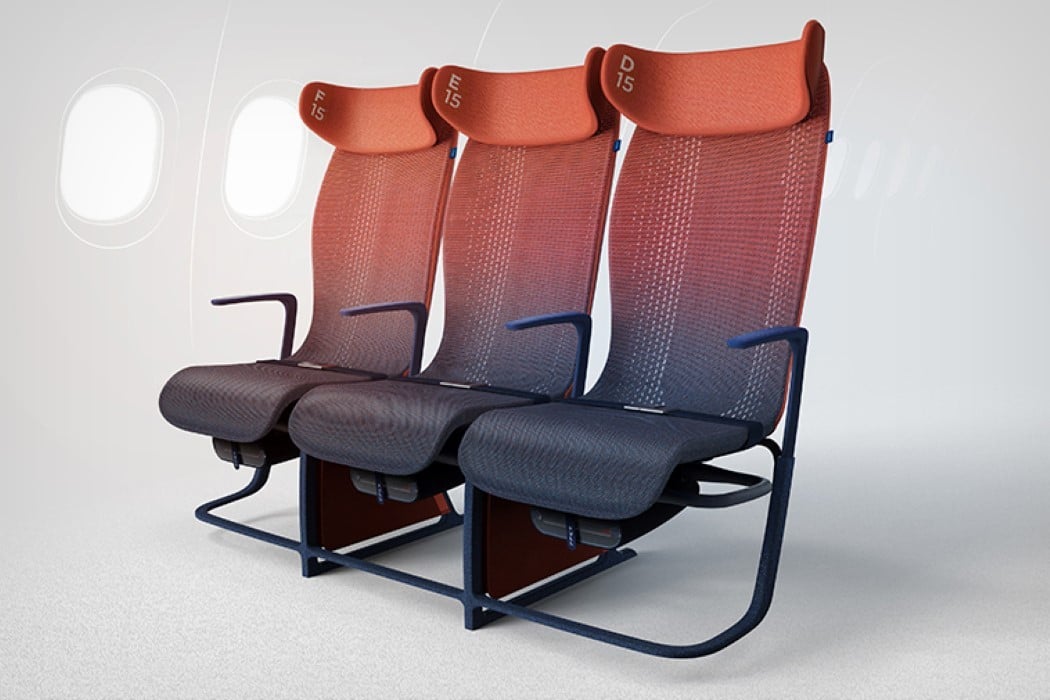
The bane of air-travel, aside from noisy children and overpriced peanuts of course, is the fact that you’re stuck in an uncomfortable chair with practically no cushioning and hardly any leg-room. The economy class of an airplane is designed to be just that… economical. It sacrifices comfort, the need of personal space, and probably even its share of functionality just to make sure it can host as many passengers on the plane. We justify this mild discomfort because “it’s only for a few hours, right?”
In collaboration with Airbus, Benjamin Hubert of LAYER Design has developed what may just be the future of the economy class. An 18-month long project, Hubert’s transformed the very idea of the economy class without compromising on the quantitative nature of economical travel. Introducing smart fabrics that fit futuristic possibilities into a single sheet of cloth, and a thin, strong frame that holds everything together (along with a pretty remarkable tray system), Hubert and Airbus’s design, titled ‘Move’, allows seating to remain thin yet comfortable, and even makes accommodations for entertainment, storage, and even the so-far-unsolvable problem of legroom. The result is seating that occupies less space, but doesn’t let that be perceived as a con. It makes up for everything with top-notch design, engineering, and technology, allowing the economical class to feel classy.
THE SEAT – MATERIAL
The Move employs a smart textile seat cover (polyester wool blend – for heat regulation, robustness, and tactility – with integrated conductive yarn) that’s mounted on a robust aircraft grade aluminium and carbon fibre frame. “The knitted seat cover has zones of various density knit that offer different levels of support to the body. Throughout the journey, the Move seat automatically adjusts based on passenger weight, size, and movement to maintain optimal ergonomic comfort”, says Hubert. “This is made possible by passing current through the conductive yarn to vary the seat tension. The passenger can make additional adjustments to the seat based on personal preference using the Move app. The Move app can also be used to engage different seat modes, such as ‘massage’, ‘mealtime’, or ‘sleep’.”
THE SEAT – COMFORT
With a set fabric that can change density, flexibility, and even temperature, the Move doesn’t need to worry about integrating foam panels for cushioning, and even ditches the reclining mechanism. The reclining mechanism helps chairs feel more relaxing by changing one’s posture. However, a posture change also results in the eternal legroom problem. “The position of the seat is fixed – which addresses the issue of ‘legroom rage’ caused by passengers unnecessarily reclining on shorter flights”- instead, the chair’s fabric possesses the ability to learn from your posture, build, and body temperature, helping you sit in a way that feels comfortable to you. This could mean heating the chair up or cooling it down… or even tightening the fabric near the kidneys for greater lumbar support, or relaxing the overall textile for a more hammock-like feel.
THE TRAY TABLE + STORAGE
The Move also integrates a display and tray unit on the back of each seat. The display unit delivers key information, and even comes with an optional In Flight Entertainment module that can fit in its place. The tray unit combines functionalities too, serving as an emergency exit map when closed, and a fully height-adjustable tray when opened out. Right under it is a pocket to store your belongings, and the Move even comes with a sleeve to store laptops and tablets underneath the seats (between individual chairs). The laptop sleeves come made with a pressure sensitive yarn too, reminding you to collect your belongings while deboarding the plane.
DESIGN DETAILS
Move’s design is quite a departure from the usual defensive design of economical class seating which sort of acts as a psychological reminder that the Business Class is better and more desirable. Hubert uses a beautiful gradiented fabric to make the plane’s interiors more eye-catching, feeling more like a theater and less like the waiting room at an ER. Height adjustable armrests let you go from compartmentalized to bench-style seating, and the headrests even curve inwards, providing a great pillow to rest your head against, while also allowing you to get that private, cocooned feeling. My favorite detail is the fact that they even come with the seat number embroidered/printed directly on the headrest so you’ll never find yourself struggling to locate your seat by constantly holding up your boarding pass to double check for your spot! And it does all this without altering or tinkering with the orientation or the layout of seats, but rather just upgrading the seat as a singular unit.
Designers: Benjamin Hubert (LAYER) & Airbus.
